Salzmann Engineers: Cable Cars for IndiaJoint Venture of Salzmann Engineers and BERNARD Group +++ Landmark project for Indian public transport infrastructure in Varanasi +++ Billion-dollar investment program +++ Feasibility studies and overall planning +++ Cable car network for the mountain city of Shimla Cable Cars for India Sacred temples, dense jungles, four-lane roads teeming with people, vehicles, and animals, temperatures up to 45 degrees Celsius in the shade, and constant honking: Salzmann Engineers, in collaboration with the BERNARD Group from Hall in Tyrol, took the leap into India. Together, the two specialists are assessing suitable locations for cable cars on the subcontinent and have been actively involved in planning two landmark projects. In the "eternal city" of Varanasi, the joint venture facilitated the rapid realization of the country's first urban cable car. Starting from May 2025, it will transport 3,000 pilgrims per hour to the famous Kashi Vishwanath Temple. In the mountain city of Shimla, three lines with a total length of 14 kilometers are under construction, aiming to significantly improve the lives of people living above 2,000 meters. Embarking on the adventure, it all began with a call from the BERNARD Group to Salzmann Engineers. The international engineering firm from Hall in Tyrol was planning to participate in the massive infrastructure project "Parvatmala" of the Indian government and sought a partner with cable car expertise. Markus Türtscher from the BERNARD Group called Stephan Salzmann in November 2021, sharing details of the government's $3.5 billion cable car investment program through the National Highways Logistics Management Limited (NHLML). While the BERNARD Group, with its local presence in Delhi, would handle project management and all construction-related matters, Salzmann Engineers would be responsible for the cable car technology's conception. In the first stage, ideas for potential locations were to be examined, and feasibility studies were to be conducted. Soon after, the flagship project in the pilgrimage city of Varanasi followed, and later, the mountain city of Shimla became part of the venture. "Such an opportunity might come only once in a lifetime. India, with its topographical and urban structure, is perfectly suited for cable cars: limited space, dense population, jungles, and mountains," says Stephan Salzmann. The entire team was immediately fascinated. "Of course, we had concerns too. We are experts in cable cars, and we have been really good at it for 50 years. But we had never worked outside Europe. In India, we would encounter many cultural, linguistic, climatic, regulatory, and legal peculiarities. Participating in the tender was also a leap into the unknown," says Salzmann. Together with the BERNARD Group, the company formed a joint venture – and secured the contract. Project validation from north to south Around 300 locations were submitted by states and union territories for the "Parvatmala" program. Salzmann Engineers and the BERNARD Group have been assigned 20 of them for feasibility assessment. "This made us realize the enormous dimensions of the project once again," recalls Salzmann. The potential locations range from the far north in the Union Territory of Ladakh to the southernmost state of Tamil Nadu, covering over 3,500 kilometers between projects. They vary from relieving urban traffic to regulating pilgrim flows and offering tourist attractions. Some routes are only a few hundred meters long, while others stretch over several kilometers. The "Pre feasibility" phase involves analyzing locations, traffic situations, and visitor flows. "Everything is included, from the mountain temple at 3,000 meters above sea level to facilities in the jungle," reports Marie Bach. In addition to geographical factors, ownership and religious considerations also play a role in the feasibility assessment. "Temple authorities have a say in route planning and often have the final word. Power lines must not be disturbed. Trees are also sensitive – especially in nature reserves. However, for the construction of supports, clearing is occasionally necessary. Sometimes the military gets involved, and flight restrictions hinder aerial surveys and drone measurements," provides Stephan Salzmann insights into unexpected challenges. In addition to "Pre feasibility" studies, the joint venture is entrusted with twelve planning projects and prepares "Detailed Project Reports" (DPR) for them, including general contractor tenders (Build & Operate). Safety is a central theme. While large projects follow European standards, smaller installations lack a comparable national standard. "We orient ourselves towards Europe and address safety issues primarily through constructive elements such as integrated evacuation," emphasizes Stephan Salzmann. Pilgrim flows above the rooftops of Varanasi Varanasi in the state of Uttar Pradesh, with over 3,000 years of history, is one of the world's oldest continuously inhabited cities. The sacred city on the Ganges is considered the home of the god Shiva, visited by millions of pilgrims annually, and houses around 2,000 temples. The heart of religious worship is the Kashi Vishwanath Temple complex with the Ghats on the Ganges. Every day, more than 90,000 people pilgrimage there – an almost unimaginable number. Previously, the journey to the sacred sites was made on foot through crowded streets full of cars, scooters, and rickshaws. "Extreme caution was required during the visit. Those not accustomed to it are in danger," says Salzmann. An ambitious cable car project from the "Varanasi Cantt" station to the temple complex and the "Godowalia Chowk" station aims to change that. The Kashi cable car is India's first urban cable car. The flagship project of the "Parvatmala" program was personally pushed forward by Prime Minister Narendra Modi. After the initial planning, the project faced delays, and that's when Salzmann Engineers and the BERNARD Group came into play. Immediately after being awarded the first projects to the joint venture, the cable car for Varanasi was additionally commissioned as a priority project. "We had to get on a plane immediately. Our work was part of the general contractor tender," recalls Stephan Salzmann. This included complete cable car project planning and design, building planning, structural analysis, and foundation concepts. While the locations for the stations were already fixed, the challenge was to find the appropriate route over the rooftops of the old city. Not an easy task given the diverse ownership situation. An Indian legal feature simplified the situation. "Cable cars are treated like high-voltage lines. If they pass over the property, there is a compensation payment. Thus, only building rights for support locations are needed for construction," explains Salzmann. The team searched for small state-owned properties such as roads and traffic islands. The challenge: In the end, it had to form a straight line with regular intervals. After five weeks, the basic structure was in place. Support was also received from the government: "The significant political interest was always palpable and crucial for rapid realization," says Salzmann. The total 3.7-kilometer route runs over four sections and five stations. It harmoniously integrates into the historical context parallel to the main traffic arteries. Twenty-nine supports with heights up to 46 meters hold the cable car above the rooftops. With Prime Minister Modi's groundbreaking ceremony in March 2023, construction started. By May 2025, the first pilgrim flows will be transported in approximately 150 state-of-the-art 10-person cabins – 3,000 people per hour for 16 hours a day. Currently, a complete network with several sections is planned for Varanasi. The joint venture is currently engaged in planning the second phase from the Cantt station to the Namo Ghat. Time pressure in the mountainous Shimla The city is known as the "Queen of the Hills," and the first glance reveals why. Shimla nestles on the slopes of the middle Himalayas. Around 170,000 people live in the capital of the state of Himachal Pradesh at an altitude of over 2,000 meters. Additionally, about three million tourists visit annually – with a rising trend. Shimla is not just located in the mountains; the city is built on a mountain range and spans 15 hills. Between the houses, the terrain can drop more than 150 meters steeply. "It's like moving Innsbruck to the Nordkette," describes Stephan Salzmann. The ideal topography for an urban cable car. The local transportation authority recognized that, and the now well-known joint venture was approached. "There were hardly any specifications, only a very strict schedule. It was a very intense time," reports Marie Bach. She started at the Bregenz engineering firm in March 2022 and was involved in the project from the beginning. For the optimal route through residential areas, oak, cedar, and pine forests, all options were considered – always taking into account the already known location issues for supports and stations. Like in Varanasi, public properties were identified. After just one month of planning, the team presented a cable car network with three lines, 15 sections, and a total length of about 14 kilometers. The planning laid the foundation for the ongoing general contractor tender. If all goes according to plan, construction is expected to start in 2024. Full team effort Salzmann Engineers has successfully navigated the great adventure of India as a strong team. Managing Director Stephan Salzmann and planner Jörg Egger soon received support. Since her first day at work, Marie Bach has been the interface to the BERNARD Group team in India, keeping track of the ever-growing mountain of tasks and changing order situations. Loris Rau joined Salzmann Engineers in April 2023 and was immediately involved in the Shimla project. For Stephan Salzmann, the past months have been proof of the power of collaboration: "Together, we achieve more and have much more ahead. This is just the beginning of our journey in India." Shimla Cable Car Network Technical Data System: 10 Gondola Lift Lines: Apple Line, Deodar Cedar Line, and Monal Line Length: 13,820 meters Number of Stations: 21 Number of Supports: 103 Capacity: 3,000 persons/h (Apple and Deodar Cedar) or 2,500 persons/h (Monal)
|
ropeways.net | Home | Urban | 2024-01-22
More articles:
Terry Peak Ski Area: Investing in upgrades to the snowmaking system
2024-07-30
RED Mountain Announces Major Expansion with New Summer Bike Park Project
2024-07-29
Google Adsense


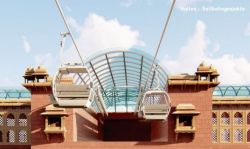

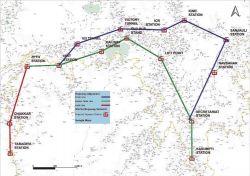
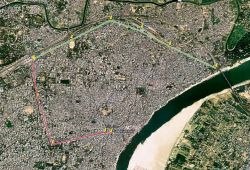
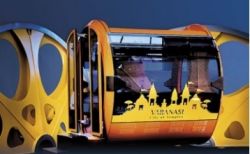
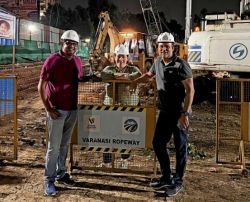
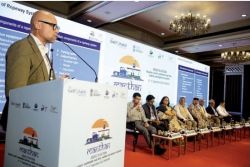
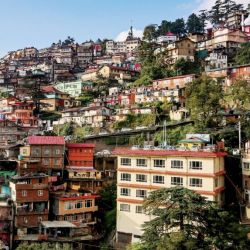
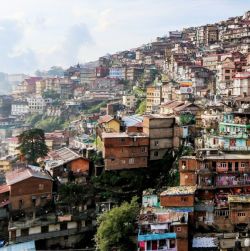
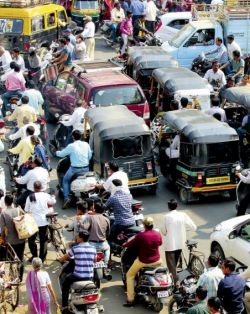
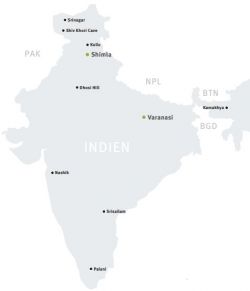
 Back
Back Add Photos
Add Photos Print
Print